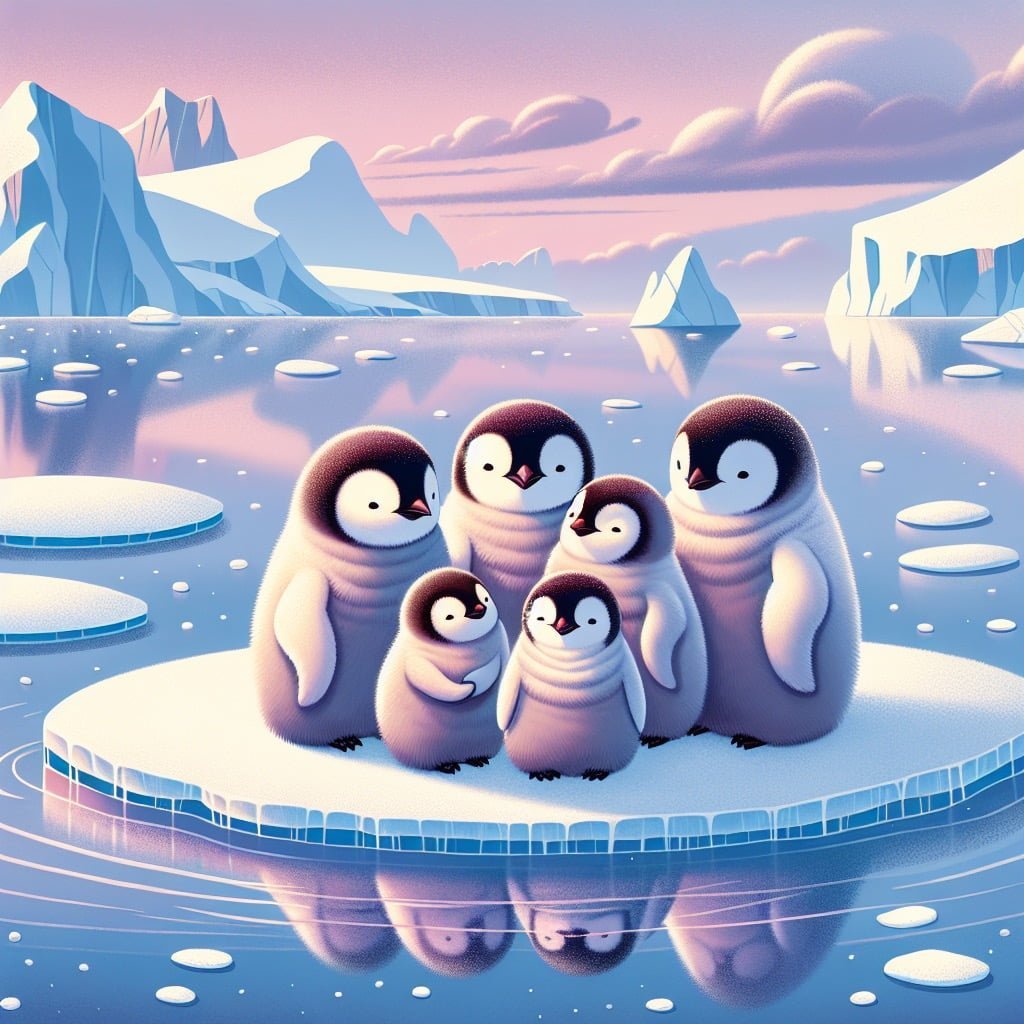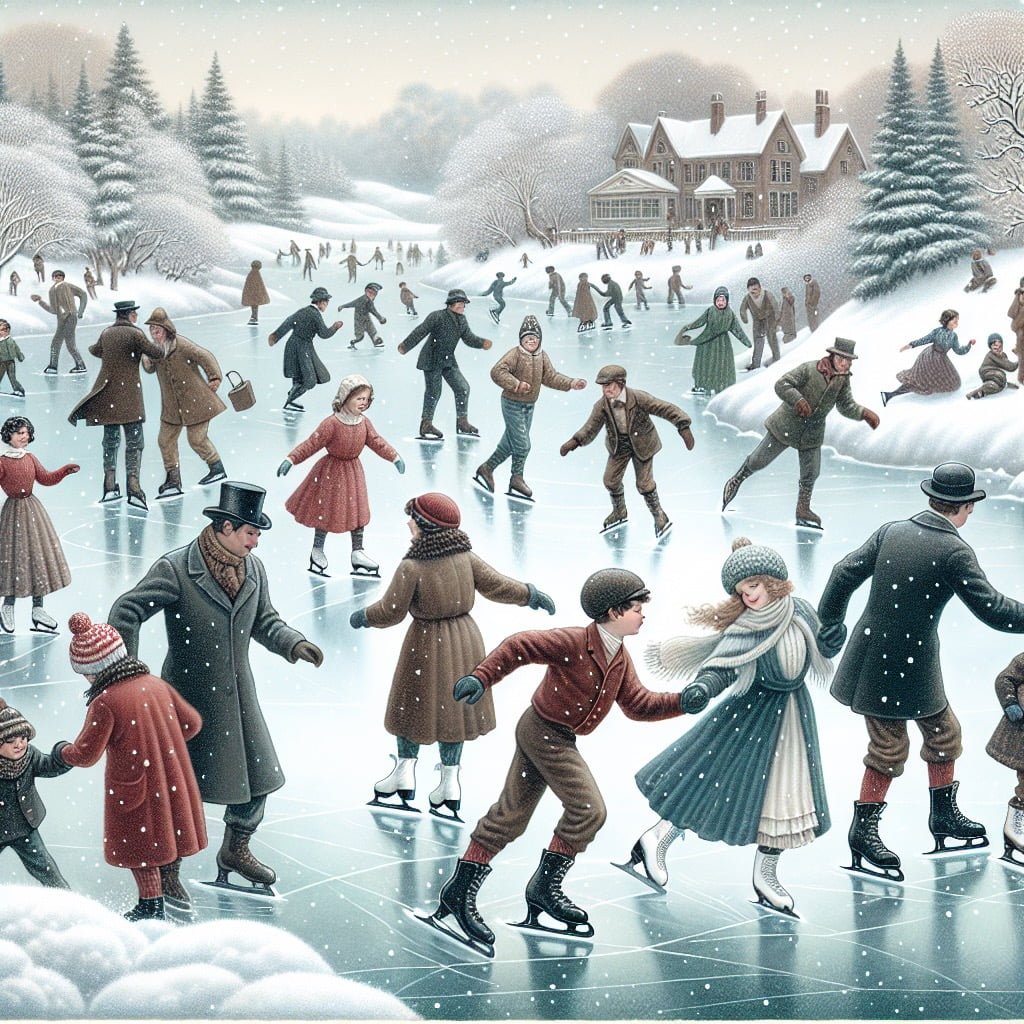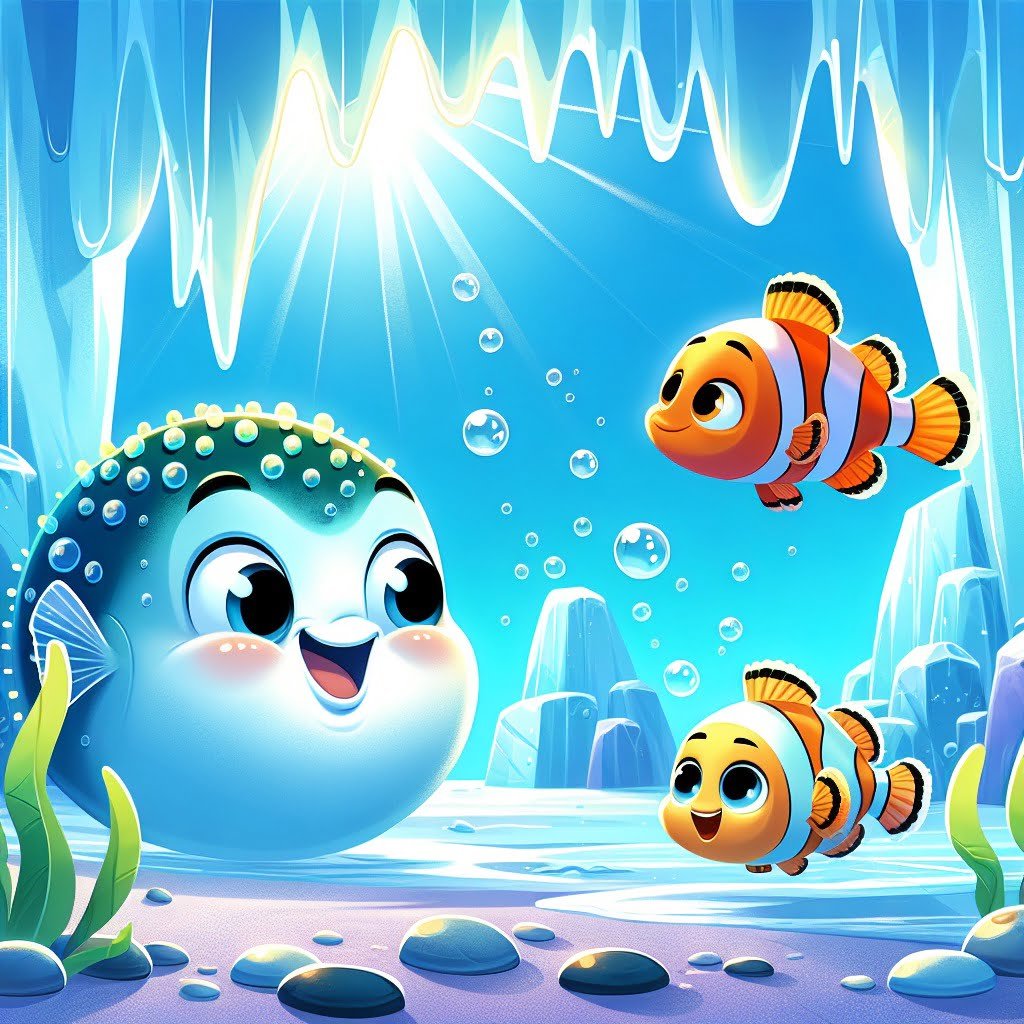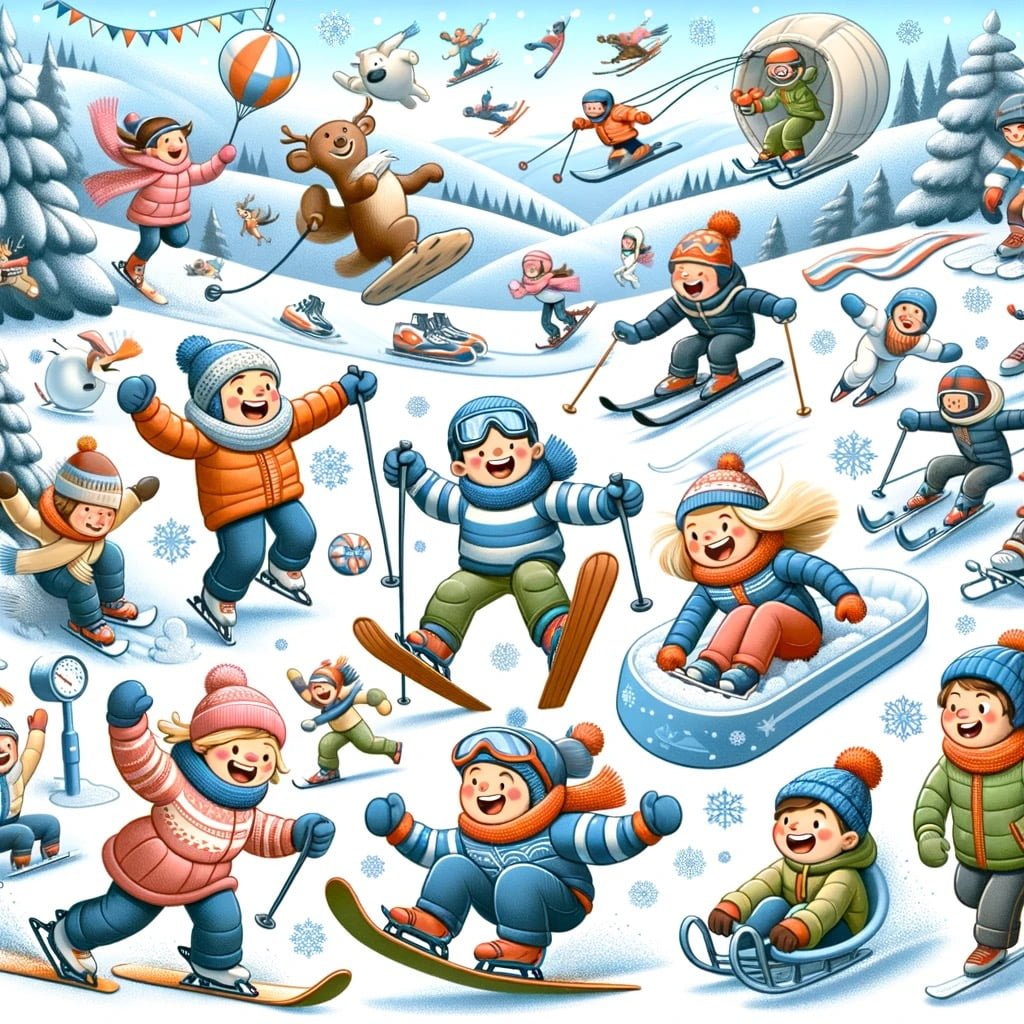Welcome to a magical journey through fascinating Winter Facts For Kids! As an expert on the wonders of the natural world, you are in for a treat as we explore the enchanting and educational aspects of the winter season. From the unique patterns of snowflakes to the captivating behaviors of animals like penguins and snowy owls, each fun fact unveils a new layer of discovery and wonder. Join us on this exhilarating adventure as we delve into the beauty and complexity of winter, inspiring curiosity and appreciation for the marvels of the natural world. So, grab a warm cup of cocoa, cozy up, and let’s embark on a thrilling exploration of Winter Facts For Kids!
Winter Facts For Kids
1. Snowflakes Are Never Identical

For younger kids: Every snowflake is unique, just like you!
For older kids: It’s a scientific fact that no two snowflakes are alike. Each snowflake forms differently due to variations in temperature, humidity, and other atmospheric conditions.
Detailed explanation:One of the most fascinating winter facts for kids to learn about is that snowflakes are never identical. While it may seem like every snowflake is the same, each one actually has its own unique crystalline structure. This is due to the way snowflakes are formed in the atmosphere.
When water vapor in the air condenses and freezes, it forms ice crystals that make up a snowflake. As these ice crystals fall through the atmosphere, they can encounter different temperature and humidity conditions. This causes each snowflake to grow in its own unique way, resulting in a wide variety of shapes and sizes.
The intricate patterns of snowflakes are created by the way water molecules arrange themselves as they freeze. These patterns can be influenced by factors such as the temperature and humidity of the air, as well as the presence of impurities in the water droplets.
While it is extremely rare to find two snowflakes that are exactly alike, it is not impossible. In fact, some scientists have claimed to have found identical snowflakes, but this has not been widely accepted in the scientific community.
Overall, the fact that snowflakes are never identical is a fascinating reminder of the complexity and beauty of nature. So next time it snows, take a closer look at the individual snowflakes falling from the sky and marvel at their unique shapes and patterns.
Winter Facts For Kids
2. Penguins Huddle to Stay Warm

For younger kids: Penguins snuggle up close to keep each other cozy in the icy cold.
For older kids: In the freezing cold of winter, penguins form large huddles to conserve body heat. This cooperative behavior helps them survive in extreme conditions.
Detailed explanation:Penguins are fascinating creatures that have developed several unique adaptations to survive in their cold, harsh environments. One of the most interesting behaviors exhibited by penguins is their tendency to huddle together in large groups, known as a huddle, in order to stay warm during the cold winter months.
When penguins huddle together, they are able to conserve body heat by sharing warmth with each other. The penguins on the outside of the huddle rotate with those on the inside, allowing all members of the group to benefit from the collective warmth generated. This behavior is essential for their survival in the frigid temperatures of Antarctica and other polar regions.
In addition to sharing body heat, penguins also rely on their thick layers of insulating feathers to keep warm. These feathers trap a layer of air close to the penguin’s body, creating a barrier against the cold temperatures of their environment. Penguins also have a specialized network of blood vessels in their legs that helps regulate their body temperature by keeping their extremities warm.
Overall, the ability of penguins to huddle together and share body heat is a crucial adaptation that allows them to survive in their icy habitats. By working together in a cooperative manner, penguins are able to stay warm and conserve energy during the long winter months. This fascinating behavior is just one of many intriguing Winter Facts For Kids that highlight the remarkable adaptations of these unique birds.
Winter Facts For Kids
3. The Northern Lights Dance in the Sky

For younger kids: The Northern Lights create colorful dances in the sky!
For older kids: The mesmerizing Northern Lights, also known as Aurora Borealis, are an enchanting natural light display caused by the collision of solar particles with the Earth’s atmosphere near the North Pole.
Detailed explanation:One of the most mesmerizing natural phenomena that can be observed during the winter months is the Northern Lights, also known as the aurora borealis. This stunning display of colorful lights dancing across the night sky is caused by the collision of charged particles from the sun with gases in the Earth’s atmosphere. When these charged particles enter the Earth’s atmosphere, they interact with gases such as oxygen and nitrogen, producing stunning colors like green, purple, pink, and blue.
The best places to witness the Northern Lights are in regions close to the North and South poles, such as Scandinavia, Alaska, Canada, and Iceland. During the winter months, when the nights are longer and darker, the chances of seeing this celestial light show are significantly higher. The dark winter nights provide the perfect backdrop for the vibrant colors of the aurora borealis to shine brightly.
To increase your chances of seeing the Northern Lights, it is recommended to head to a location far away from city lights and pollution. Clear, dark skies are essential for spotting this natural wonder. Additionally, keeping an eye on aurora forecasts and staying up late or waking up early can also help increase your chances of witnessing the Northern Lights.
Overall, the Northern Lights are a breathtaking winter phenomenon that never fails to leave spectators in awe. Whether you’re a child or an adult, witnessing the aurora borealis dance in the sky is a magical experience that will be remembered for a lifetime. So bundle up, head outside on a clear winter night, and prepare to be amazed by the beauty of the Northern Lights. Winter Facts For Kids.
Winter Facts For Kids
4. Animals Hibernate in Winter

For younger kids: Many animals take long naps during the cold winter months.
For older kids: To survive the harsh winter, some animals enter a state of hibernation, slowing down their metabolism to conserve energy until spring arrives.
Detailed explanation:Many animals hibernate in winter as a way to survive the harsh conditions and scarcity of food during this cold season. Hibernation is a state of dormancy or inactivity in which an animal’s metabolic rate slows down significantly, allowing it to conserve energy and survive on stored fat reserves. This adaptation is crucial for animals living in regions with extreme winter weather, where food sources are limited and temperatures are too cold for foraging.
During hibernation, an animal’s body temperature drops, its heart rate slows down, and its breathing becomes shallow. This helps the animal conserve energy and avoid burning through its fat reserves too quickly. Some animals, like bears, will lower their body temperature only slightly during hibernation, while others, like ground squirrels, will enter a state of deep hibernation where their body temperature drops significantly.
Winter Facts For Kids, being able to hibernate allows these animals to survive long periods of cold weather without needing to eat or drink. They will typically find a safe and sheltered location, like a burrow or den, to hibernate in until the weather warms up and food becomes more plentiful. Once spring arrives, hibernating animals will gradually awaken from their slumber and resume their normal activities.
In conclusion, hibernation is an incredible adaptation that allows animals to survive the harsh conditions of winter. By slowing down their metabolism and conserving energy, animals can make it through the cold months without succumbing to starvation or freezing temperatures. Winter Facts For Kids, learning about hibernation can help us appreciate the amazing ways in which animals have evolved to survive in their natural environments.
Winter Facts For Kids
5. Ice Skating Began in Scandinavia

For younger kids: People have been gliding on ice for a very long time!
For older kids: The origins of ice skating can be traced back to Scandinavia, where ancient people used sharpened bones to glide across frozen lakes and rivers for transportation and recreation.
Detailed explanation:One fascinating fact that many may not know is that ice skating actually originated in Scandinavia. This popular winter activity has been enjoyed for centuries in countries such as Sweden, Norway, and Finland. The cold climate in these regions allowed for natural ice rinks to form on frozen lakes and rivers, providing the perfect conditions for ice skating to develop as a recreational pastime.
Winter Facts For Kids show that ice skating has a long history in Scandinavia, with evidence of early skates dating back to as early as the Bronze Age. These ancient skates were made from animal bones and strapped onto the feet to glide across the ice. Over time, advancements in technology and materials led to the development of the ice skates we are familiar with today.
Ice skating quickly grew in popularity throughout Scandinavia and eventually spread to other parts of Europe and the world. It became not only a form of entertainment but also a competitive sport, with organized competitions and events.
Today, ice skating is enjoyed by people of all ages around the globe. Whether it’s figure skating, speed skating, or just gliding around on a frozen pond, the joy of ice skating transcends cultural boundaries. So next time you lace up your skates, remember that this beloved winter activity has its roots in the icy landscapes of Scandinavia. Winter Facts For Kids never fail to fascinate and educate about the origins of popular pastimes like ice skating.
Winter Facts For Kids
6. Evergreen Trees Stay Green All Year

For younger kids: Evergreen trees are always green, even in the snow!
For older kids: Evergreen trees retain their green foliage throughout the year, symbolizing resilience and everlasting life, making them popular choices for winter decorations.
Detailed explanation:Evergreen trees are an iconic symbol of winter, as they remain green and lush throughout the entire year. This fascinating characteristic sets them apart from deciduous trees, which shed their leaves in the fall and remain bare throughout the winter months. The ability of evergreen trees to retain their leaves is due to their unique biology and adaptation to cold weather.
One key feature of evergreen trees is their needle-like leaves, which are designed to minimize water loss in harsh winter conditions. These leaves have a thick waxy coating that helps to prevent water from evaporating, allowing the tree to conserve moisture even when the ground is frozen. Additionally, the narrow shape of the leaves reduces the surface area through which water can escape, further aiding in the tree’s ability to retain water.
Another important adaptation of evergreen trees is their ability to photosynthesize even in cold weather. While deciduous trees rely on the warmth of the sun to fuel their photosynthesis process, evergreen trees can continue to photosynthesize in low light conditions. This is because they have adapted to efficiently capture and utilize sunlight, allowing them to produce energy throughout the winter months.
In conclusion, evergreen trees are able to stay green all year due to their unique biological adaptations to cold weather. Their needle-like leaves and efficient photosynthesis process allow them to thrive even in the harshest winter conditions. This fascinating aspect of evergreen trees provides a valuable opportunity for children to learn about the wonders of nature and the ways in which plants have evolved to survive in different environments. So next time you spot an evergreen tree, remember this interesting Winter Facts For Kids and appreciate the beauty and resilience of these remarkable plants.
Winter Facts For Kids
7. The Winter Solstice Marks the Shortest Day

For younger kids: The winter solstice is the shortest day of the year!
For older kids: The winter solstice, occurring around December 21st, marks the shortest day and longest night of the year in the Northern Hemisphere.
Detailed explanation:The Winter Solstice is an astronomical event that occurs once a year in the Northern Hemisphere, usually on December 21st or 22nd. This day marks the shortest day of the year, with the fewest hours of daylight and the longest night. This is due to the tilt of the Earth’s axis in relation to its orbit around the sun. During the Winter Solstice, the North Pole is tilted furthest away from the sun, which results in the sun reaching its lowest point in the sky at noon.
For kids, the Winter Solstice can be a fascinating time to learn about the science behind the changing seasons. It is a great opportunity to discuss topics such as the Earth’s orbit, the tilt of the Earth’s axis, and the impact of these factors on the length of day and night. Children can also learn about the different cultural traditions and celebrations that take place around the Winter Solstice, such as Christmas, Hanukkah, and Yule.
One fun experiment to do with kids during the Winter Solstice is to track the length of daylight over several days leading up to and following the solstice. This can help children understand how the position of the Earth in relation to the sun affects the amount of daylight we experience. Additionally, discussing ways to stay warm and cozy during the long winter nights can be a fun and engaging activity for kids.
Overall, the Winter Solstice is a fascinating time of year that provides a great opportunity for children to learn about the science behind the changing seasons and to appreciate the wonders of the natural world. By exploring Winter Facts For Kids, children can gain a deeper understanding of the world around them and develop a sense of curiosity and wonder about the universe.
Winter Facts For Kids
8. Snowy Owls Migrate South in Winter

For younger kids: Snowy owls take a winter vacation to warmer places!
For older kids: Snowy owls, known for their stunning white plumage, migrate to southern regions in the winter, a behavior linked to changes in their food supply in the Arctic.
Detailed explanation:Snowy Owls are known for their stunning white feathers and piercing yellow eyes. These majestic birds are native to the Arctic regions of North America and Eurasia. One interesting behavior of Snowy Owls is their migration south in winter. While some birds migrate to warmer climates during the colder months, Snowy Owls actually head south in search of food.
During the winter months, the Arctic becomes a harsh environment with limited food sources for Snowy Owls. As a result, these birds begin their journey south in search of prey such as rodents, rabbits, and other small mammals. This migration is essential for their survival during the winter months when food is scarce in their native habitat.
Winter Facts For KidsThe migration pattern of Snowy Owls is truly remarkable. These birds can travel hundreds or even thousands of miles to reach their wintering grounds. They are able to navigate with precision using a combination of visual landmarks, the Earth’s magnetic field, and their own internal compass.
Snowy Owls are often seen in fields, marshes, and coastal areas during the winter months. Birdwatchers and nature enthusiasts flock to these areas to catch a glimpse of these beautiful creatures in their winter habitat. It is truly a sight to behold and a reminder of the wonders of the natural world.
In conclusion, the migration of Snowy Owls south in winter is a fascinating behavior that highlights the adaptability and resilience of these amazing birds. It is a reminder of the importance of conservation efforts to protect their habitats and ensure their survival for future generations. Winter Facts For Kids
Winter Facts For Kids
9. Snowshoe Hares Change Color with the Seasons

For younger kids: Snowshoe hares are like magical color-changing bunnies!
For older kids: Snowshoe hares molt their brown summer coat to grow a white one in the winter, blending in with the snowy landscape as a form of camouflage.
Detailed explanation:Snowshoe hares are fascinating creatures that are well-adapted to survive in the harsh environment of the winter months. One of the most interesting adaptations of snowshoe hares is their ability to change color with the seasons.
In the summer months, snowshoe hares have brown fur that helps them blend in with their surroundings, which is typically dry grass and shrubs. This brown fur provides camouflage and helps them avoid predators such as foxes and owls. However, as the winter approaches and the landscape becomes covered in snow, the snowshoe hares undergo a remarkable transformation.
As the days get shorter and temperatures drop, the snowshoe hares begin to grow a thicker coat of fur. At the same time, their fur changes color from brown to white. This change in coloration, known as molting, helps the hares blend in with the snow-covered terrain, making them virtually invisible to predators. In addition to their white fur, snowshoe hares also grow larger feet in the winter months. These oversized feet act like natural snowshoes, allowing the hares to move more easily across the snow without sinking in.
Overall, the ability of snowshoe hares to change color with the seasons is a remarkable example of adaptation to their environment. By blending in with their surroundings, these animals are better able to evade predators and survive the harsh winter conditions. Winter Facts For Kids like these can help children understand the wonders of the natural world and appreciate the amazing adaptations that animals have evolved to thrive in different seasons.
Winter Facts For Kids
10. Some Fish Survive Under Frozen Ice

For younger kids: Fish can live under the ice and swim freely!
For older kids: Certain fish species, like the Arctic char and pond smelt, have adaptations that allow them to survive in frigid waters under thick layers of ice, thriving in challenging winter environments.
Detailed explanation:Winter Facts For Kids are often filled with fascinating information about the ways animals adapt to survive in cold weather conditions. One such incredible phenomenon is the ability of some fish to survive under frozen ice. This may seem impossible at first, but these fish have evolved special adaptations that allow them to thrive in such harsh environments.
One such adaptation is the production of special proteins in their blood that act as antifreeze. These proteins prevent the formation of ice crystals in the fish’s cells, which would otherwise cause irreparable damage. Instead, the fish are able to continue functioning normally even in subzero temperatures. Additionally, some fish have the ability to slow down their metabolism to conserve energy during the winter months when food sources may be scarce. This allows them to survive on minimal amounts of food until the ice thaws and they can resume their normal feeding habits.
Another important factor in the survival of fish under frozen ice is their ability to extract oxygen from the water through specialized gills. Even when the surface of the water is frozen over, there is still enough oxygen present for the fish to breathe. Some fish, such as carp and trout, are even known to feed actively under the ice by scavenging for food sources that have accumulated on the bottom of the frozen water.
In conclusion, the ability of some fish to survive under frozen ice is a remarkable example of adaptation to extreme environmental conditions. These Winter Facts For Kids serve as a reminder of the resilience and ingenuity of animals in the face of adversity.
Did You Know?
Animals with white fur, like polar bears and arctic foxes, have adapted to blend in with the snowy landscape to hunt and avoid predators during winter.
Summary of Winter Facts For Kids
“Unlocking the Mysteries of Winter: Fascinating Facts for Curious Minds”
Winter is a season full of hidden wonders and captivating phenomena that not only intrigue children but also spark their curiosity about the natural world. Delving into the realm of winter facts can offer a deeper understanding and appreciation for the beauty and complexity of the season. From the mesmerizing transformation of landscapes into winter wonderlands to the extraordinary adaptations of animals to survive in the cold, there is a world of knowledge waiting to be discovered.
By immersing themselves in fun facts about winter, children can not only expand their knowledge but also develop a sense of wonder and connection to the world around them. Understanding how snowflakes form, why ice is slippery, and how animals navigate the harsh winter climate can inspire a lifelong love of nature and a thirst for exploration.
So, dive into the enchanting world of winter facts with your kids and watch as their curiosity and fascination grow. Discover the magic of winter and ignite a passion for learning about the wonders of the natural world. Embrace the chill and embark on a journey of discovery that will leave your little ones in awe of the mysteries of winter.
Sources and additional information for Winter Facts For Kids
WikipediaBritannicaHistory of Holidays (History.com)Time and Date HolidaysThe Old Farmer’s Almanac – SeasonsEarthSky – Earth’s SeasonsNational Geographic – The Science of WinterHoliday InsightsSeasons of the YearOffice HolidaysWhy Christmas?History ChannelTime and DateHallmark ChannelBritannicaWikipediaThe Spruce CraftsMartha StewartGood Housekeeping




